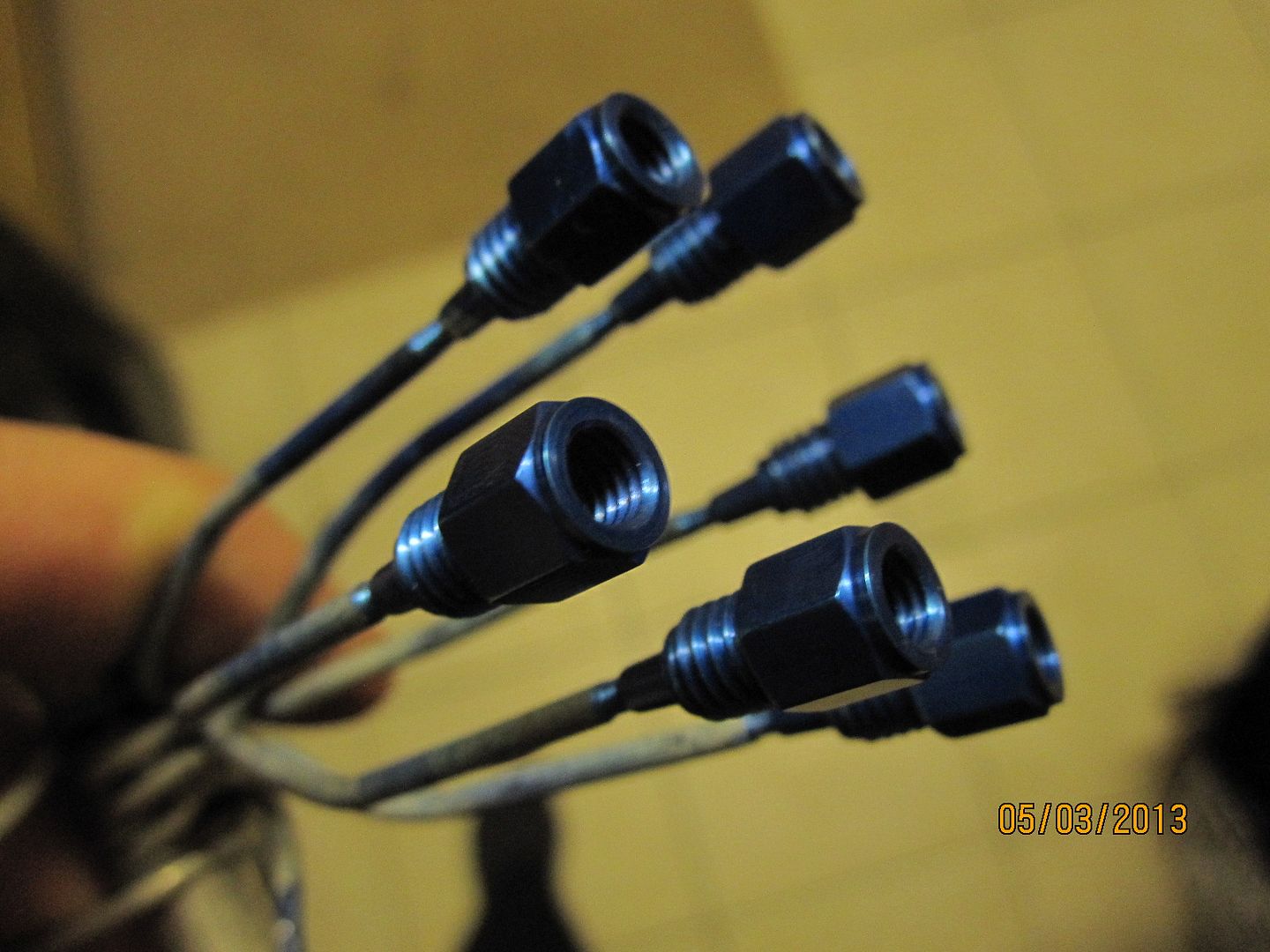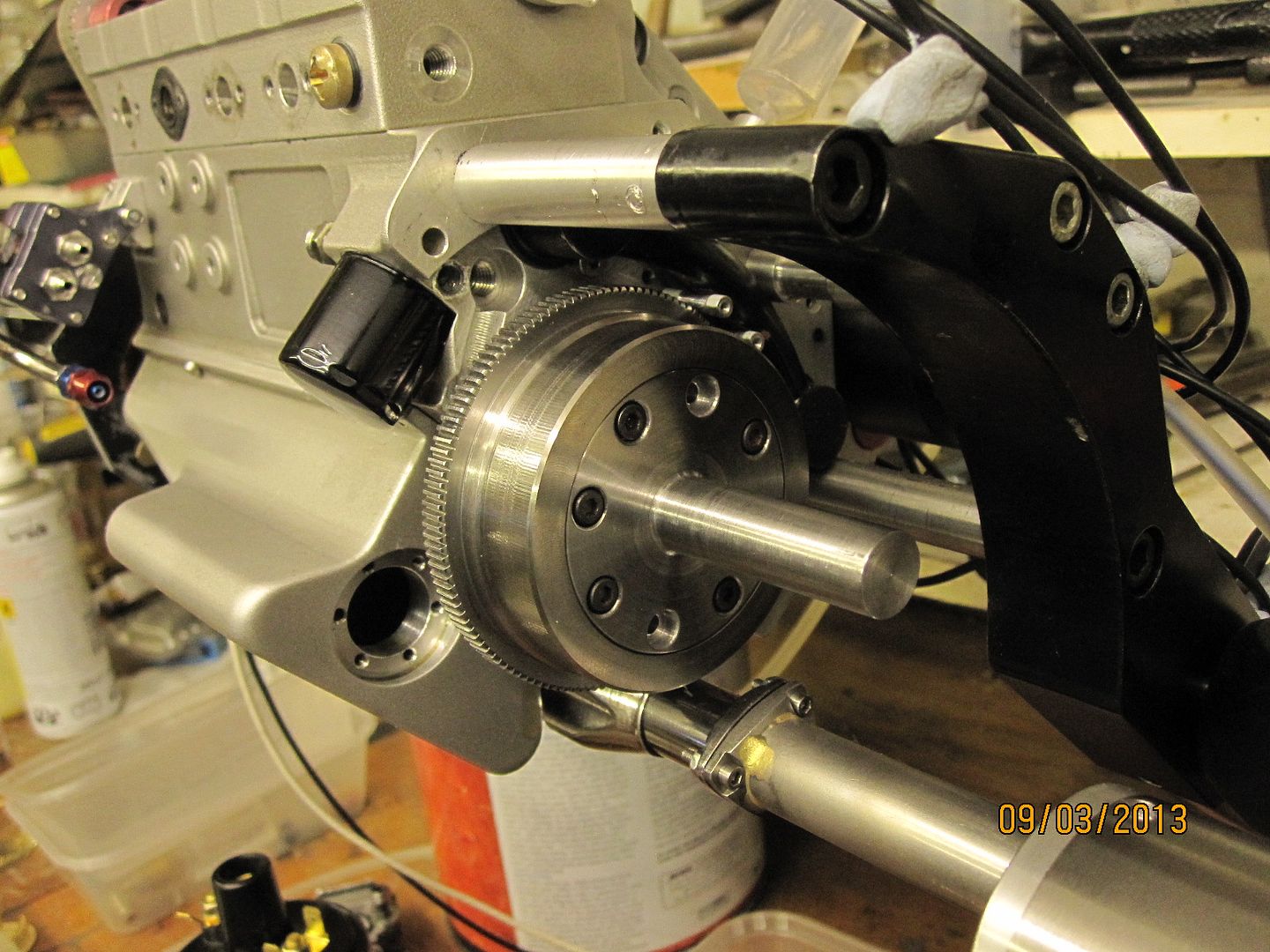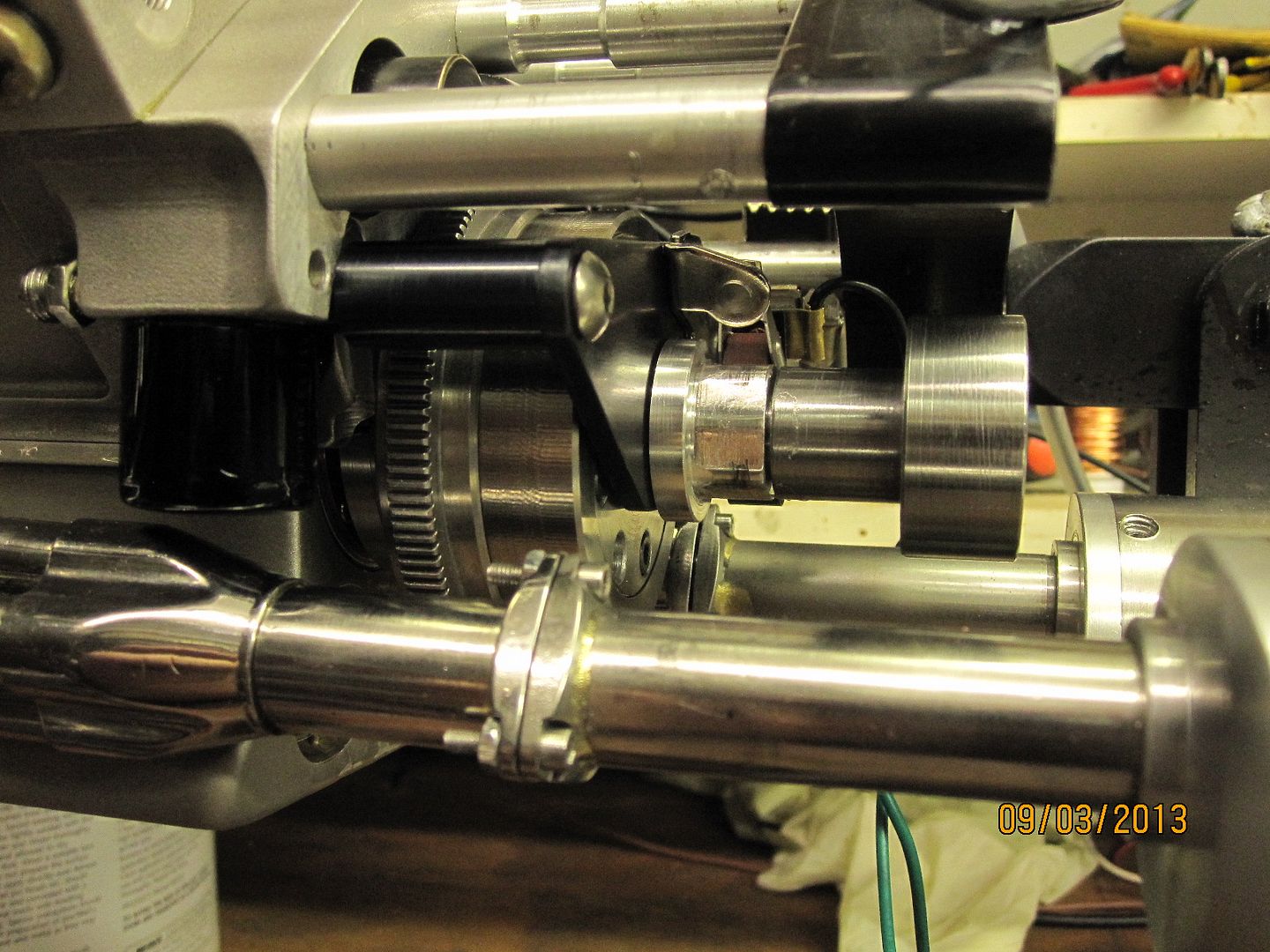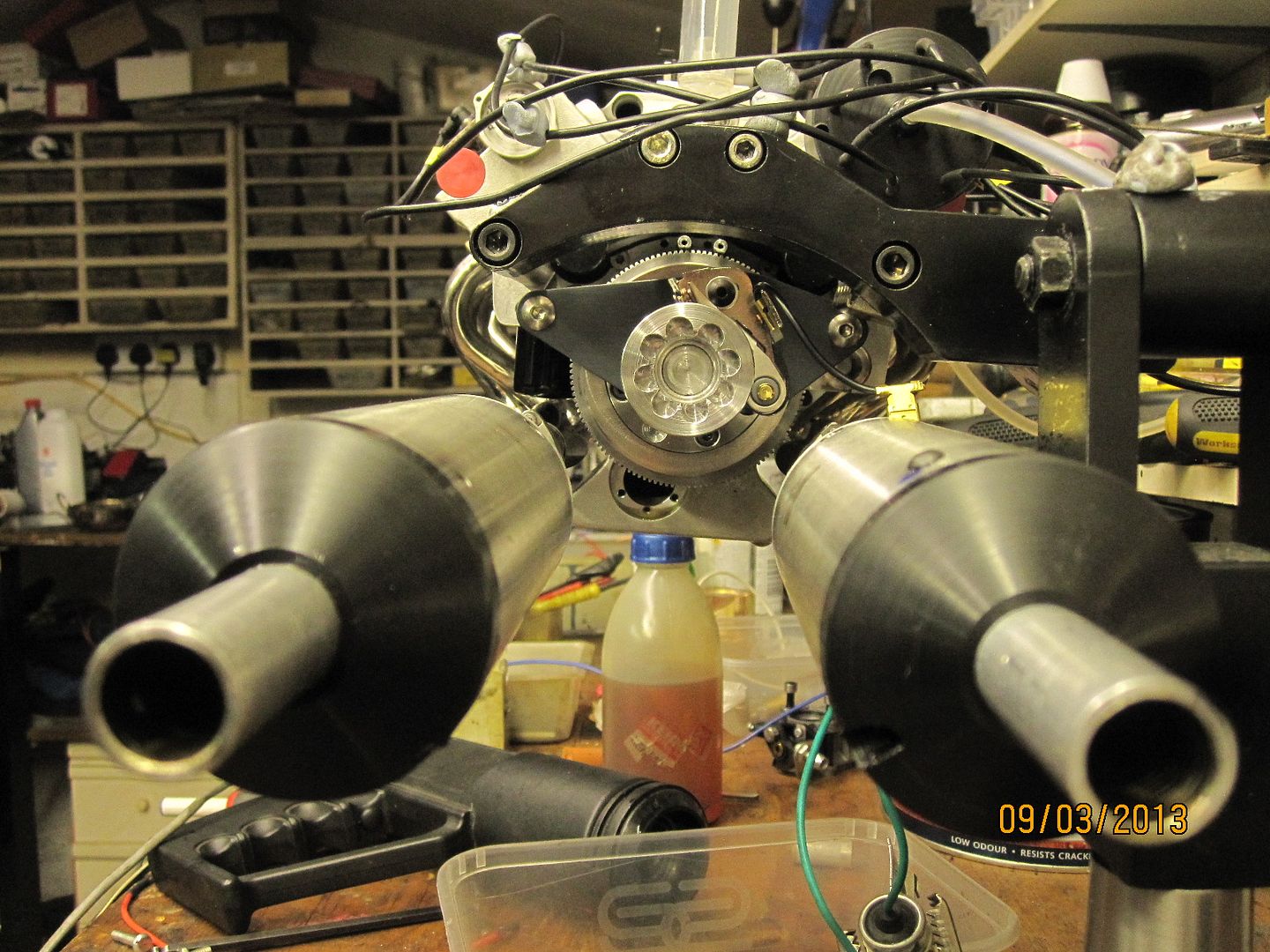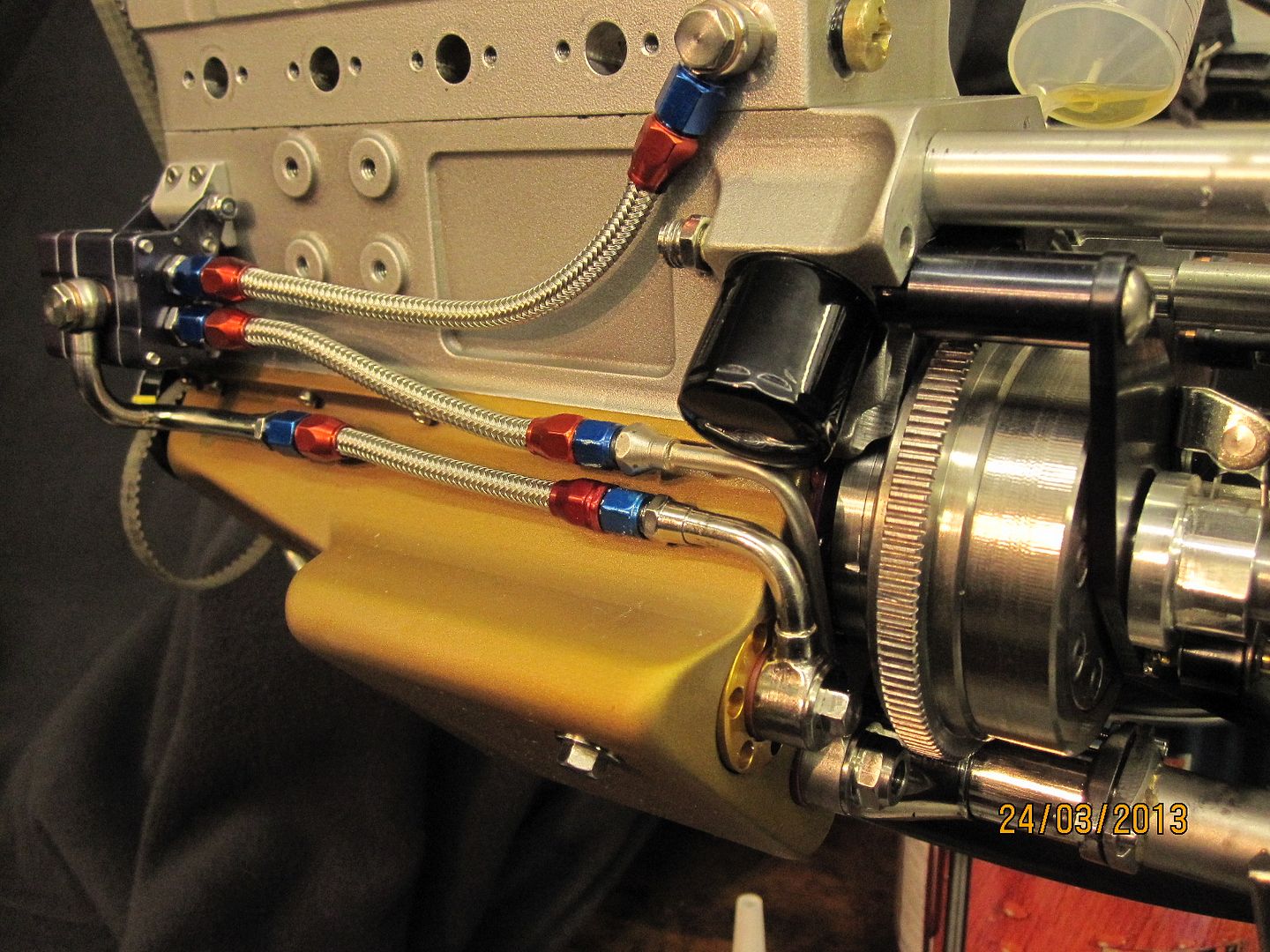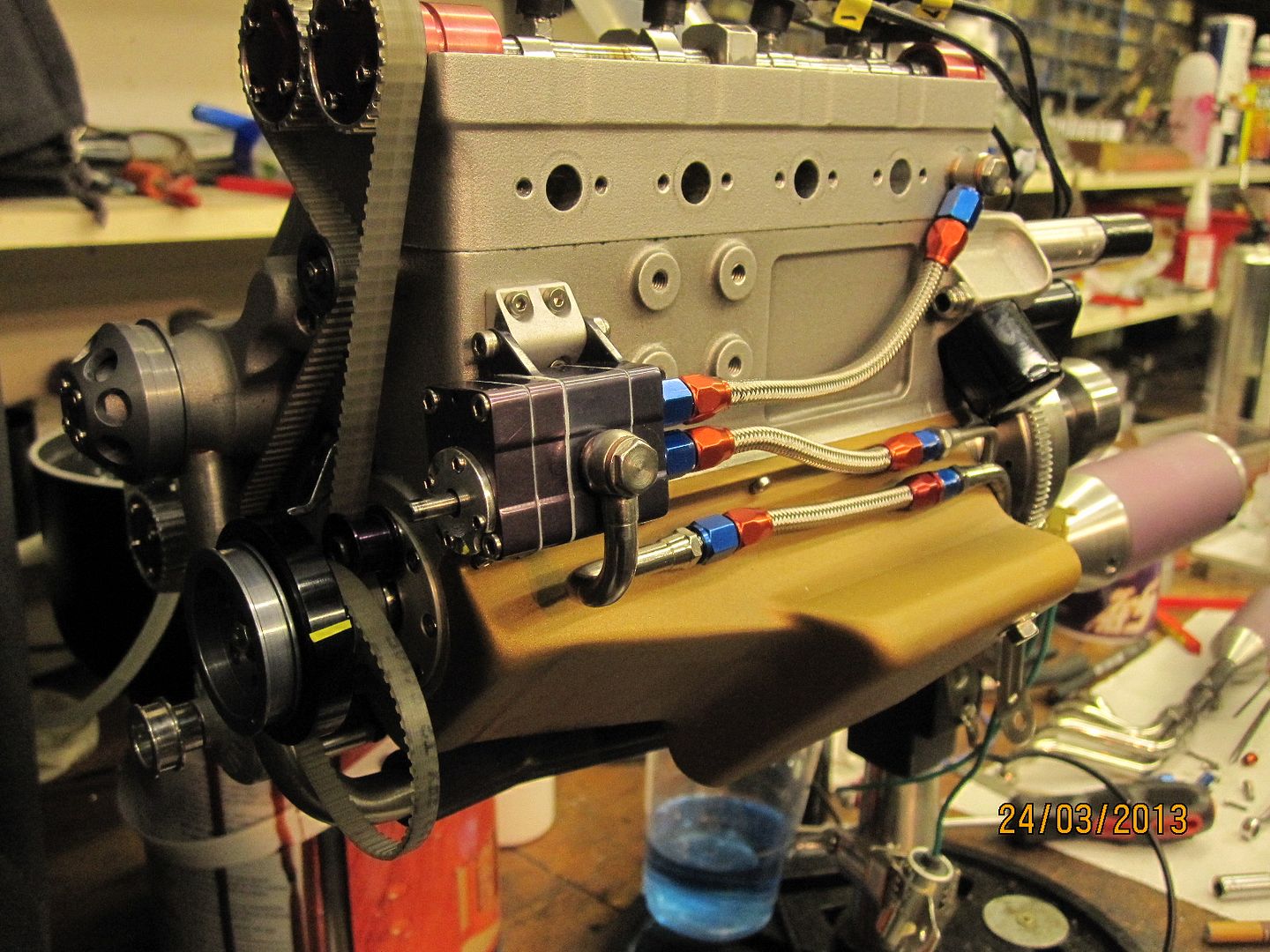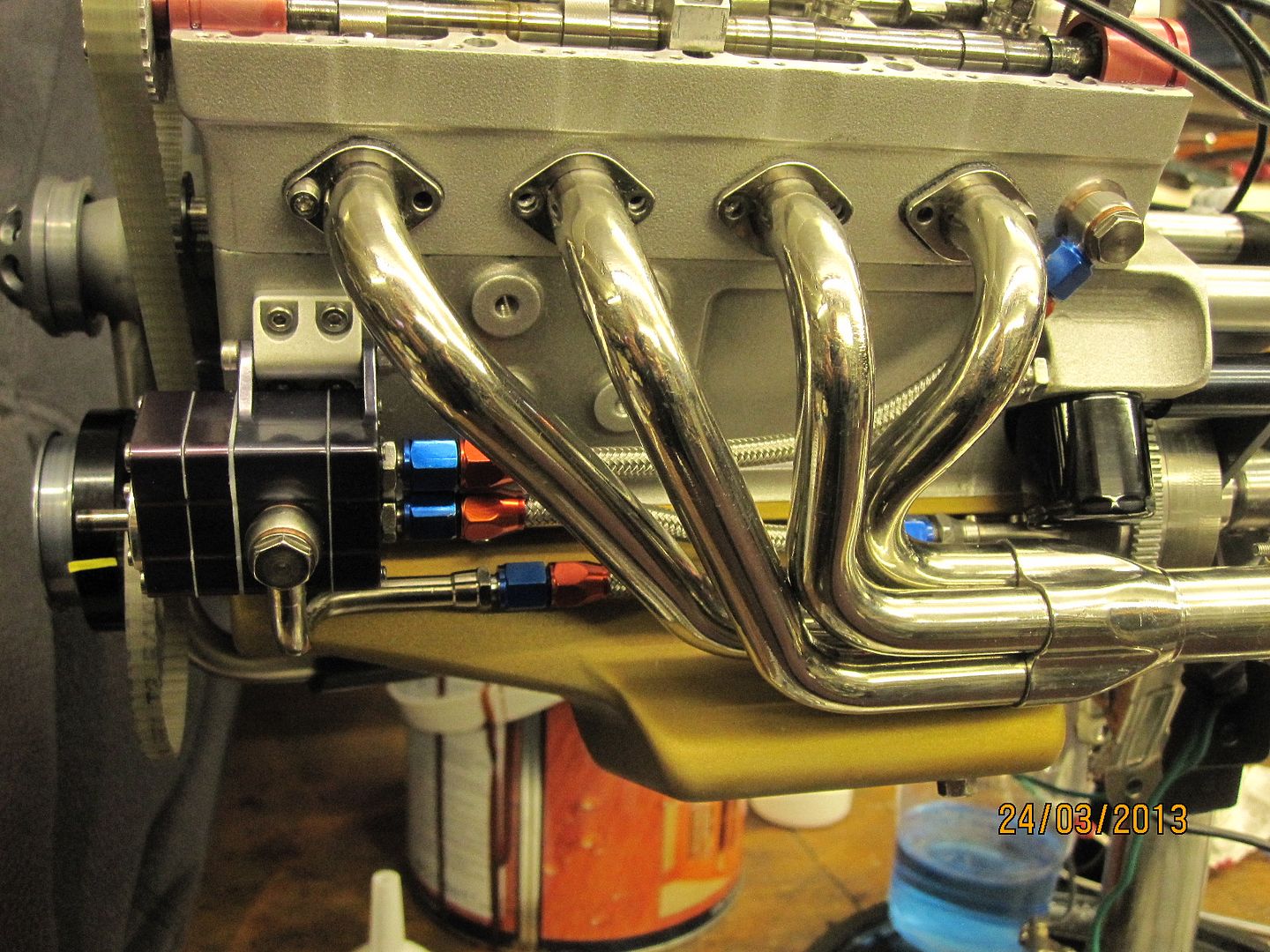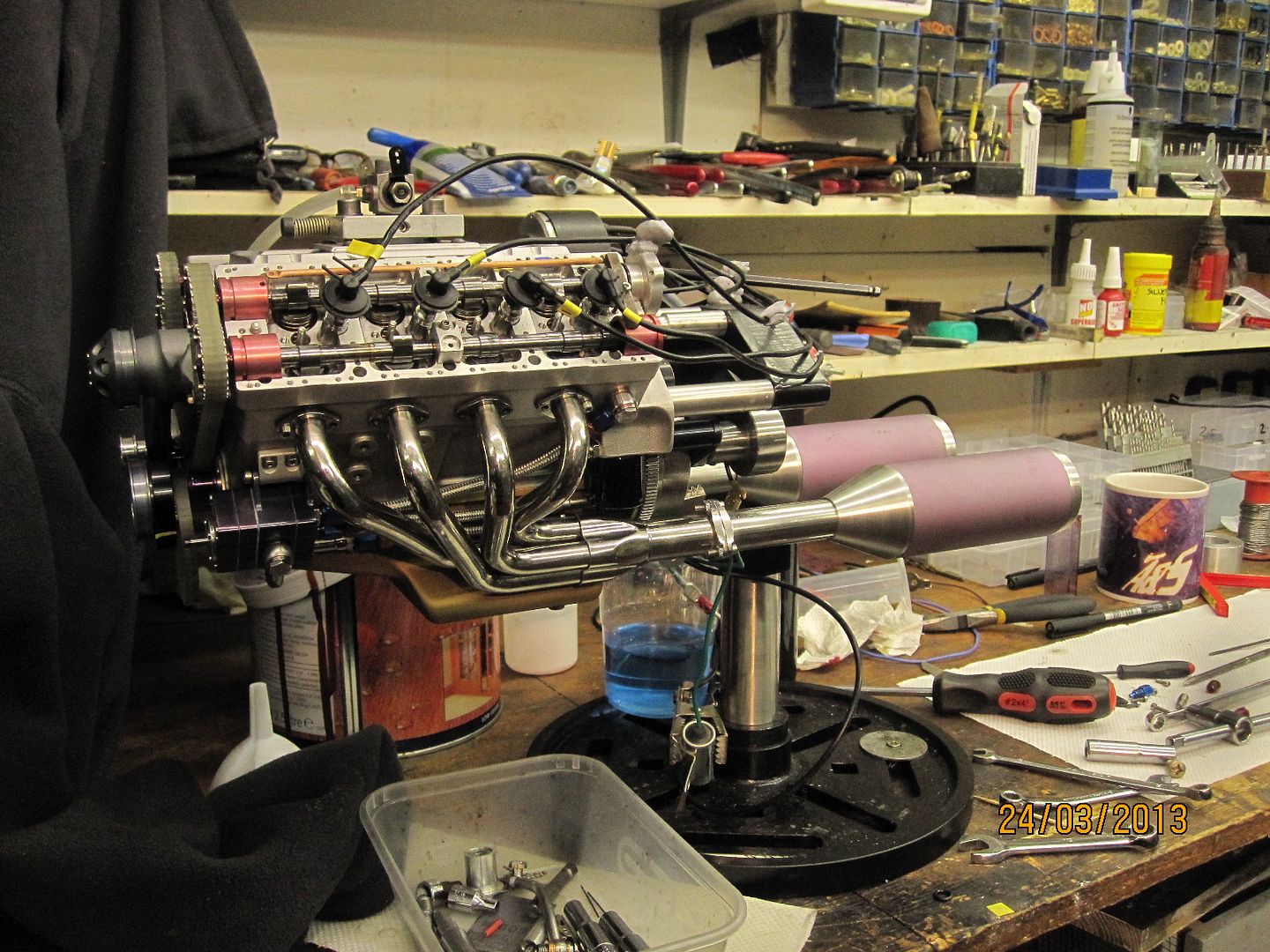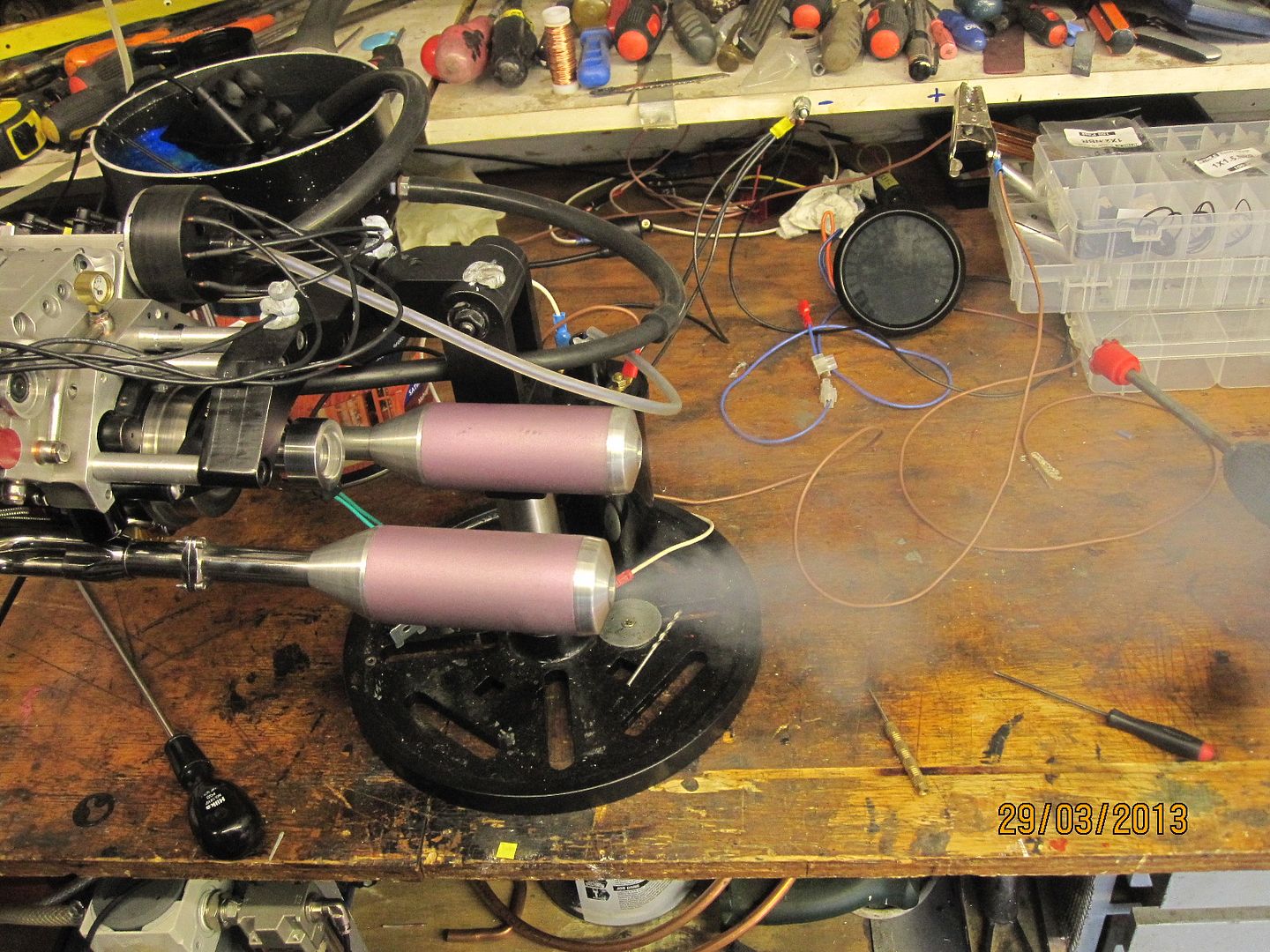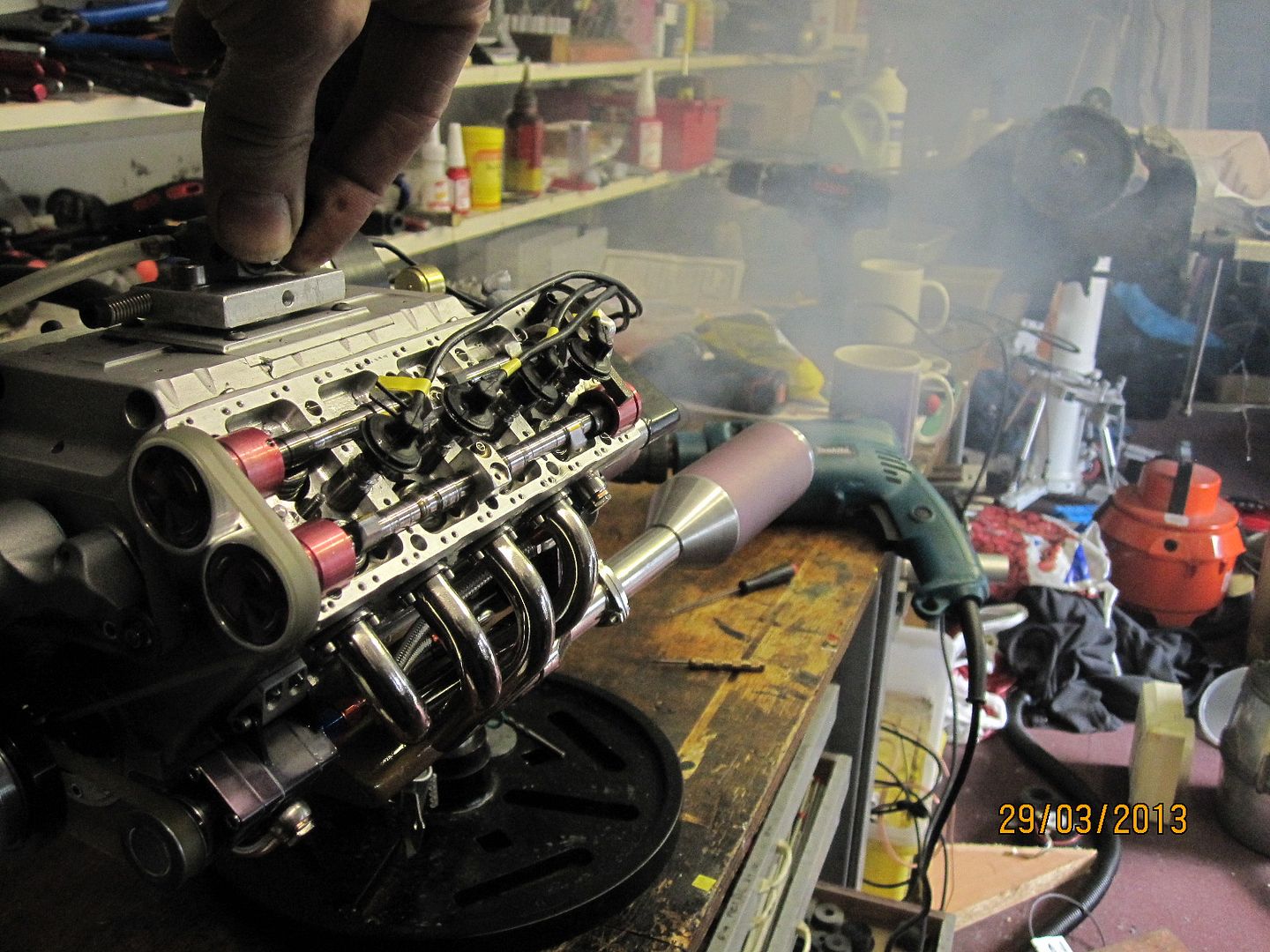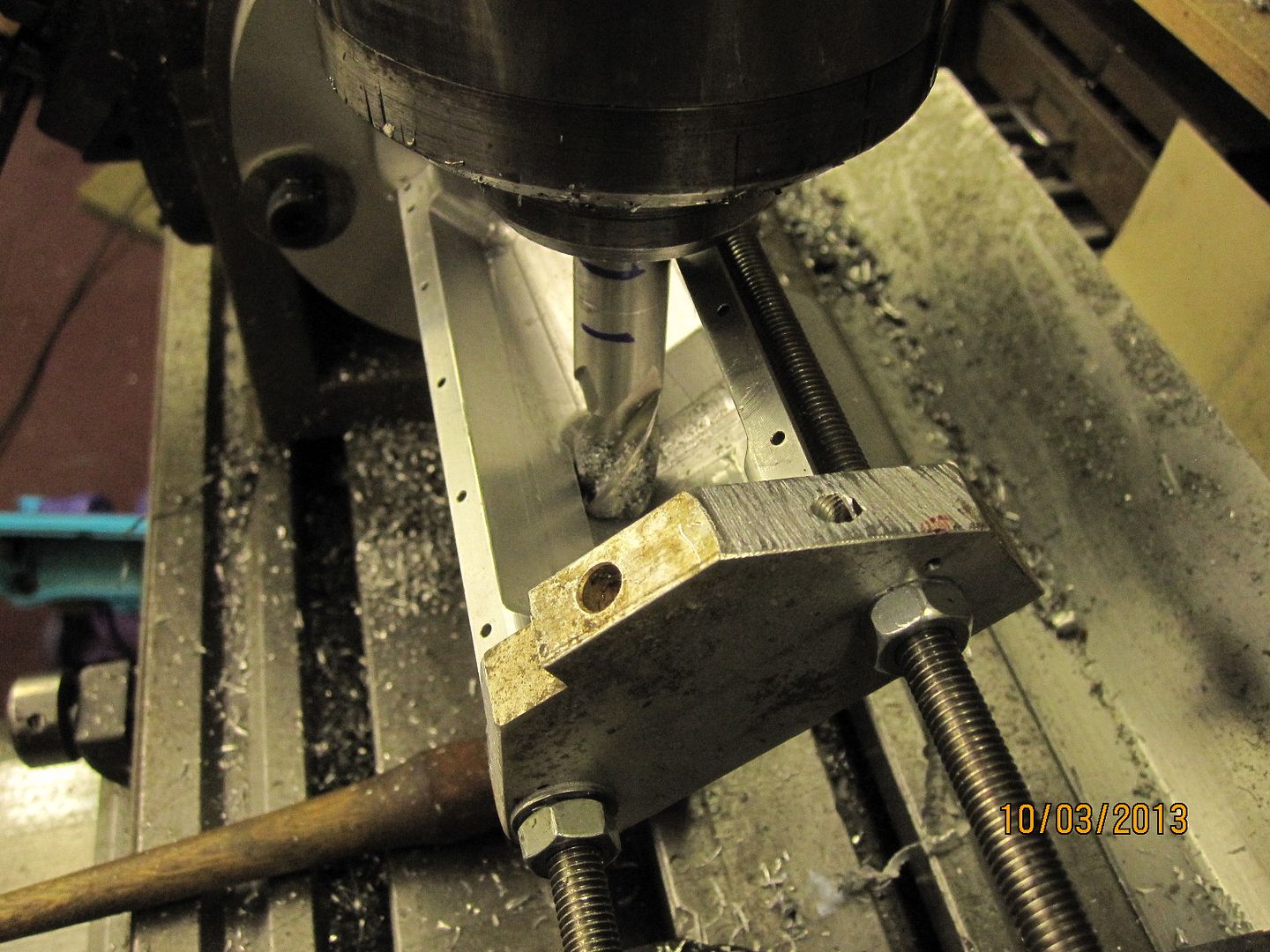- Joined
- Dec 31, 2010
- Messages
- 822
- Reaction score
- 220
Keith:
Sorry I missed the obvious gap burned from the PTFE seal.
It doesn't surprise me that it burned up since you have it right in the combustion chamber and plastic isn't much good at getting rid of heat. You'll need to have the O-ring out some distance from the bore. Not sure of scale but, could a ring be put in groove centered of the top edge of the liner.? That's about where it should be so it has metal on both sides. It could perhaps be put out in a new groove milled in the junction of the liner and block. If the ring was large enough in diameter it would seal to both pieces. Might be iffy though. If it doesn't seal properly compression might tunnel under the ring (like it did with the PTFE), and get behind the liner.
As Luc mentioned a 1/16th O-ring should technically be large enough to take the compression. I usually allow for about 10-15% crush.
Whatever you do, your going to have to fill the old step with something or you'll have a great deal of compression reduction. Maybe just a steel ring like the PTFE ring to take up space. Not sure how you would hold it in place from rattling around.
As mentioned, a copper head gasket might be the best idea. Same problem filling the step though. In that case the copper gasket might hold the step filler in place for you too.
I think you mentioned waaaay back that the heads are not water cooled so a teflon (or other insulating gasket) would be out in order to get good heat transfer from the head to the block.
Hmmm
Sage
Sorry I missed the obvious gap burned from the PTFE seal.
It doesn't surprise me that it burned up since you have it right in the combustion chamber and plastic isn't much good at getting rid of heat. You'll need to have the O-ring out some distance from the bore. Not sure of scale but, could a ring be put in groove centered of the top edge of the liner.? That's about where it should be so it has metal on both sides. It could perhaps be put out in a new groove milled in the junction of the liner and block. If the ring was large enough in diameter it would seal to both pieces. Might be iffy though. If it doesn't seal properly compression might tunnel under the ring (like it did with the PTFE), and get behind the liner.
As Luc mentioned a 1/16th O-ring should technically be large enough to take the compression. I usually allow for about 10-15% crush.
Whatever you do, your going to have to fill the old step with something or you'll have a great deal of compression reduction. Maybe just a steel ring like the PTFE ring to take up space. Not sure how you would hold it in place from rattling around.
As mentioned, a copper head gasket might be the best idea. Same problem filling the step though. In that case the copper gasket might hold the step filler in place for you too.
I think you mentioned waaaay back that the heads are not water cooled so a teflon (or other insulating gasket) would be out in order to get good heat transfer from the head to the block.
Hmmm
Sage









![DreamPlan Home Design and Landscaping Software Free for Windows [PC Download]](https://m.media-amazon.com/images/I/51kvZH2dVLL._SL500_.jpg)



![MeshMagic 3D Free 3D Modeling Software [Download]](https://m.media-amazon.com/images/I/B1U+p8ewjGS._SL500_.png)
















































